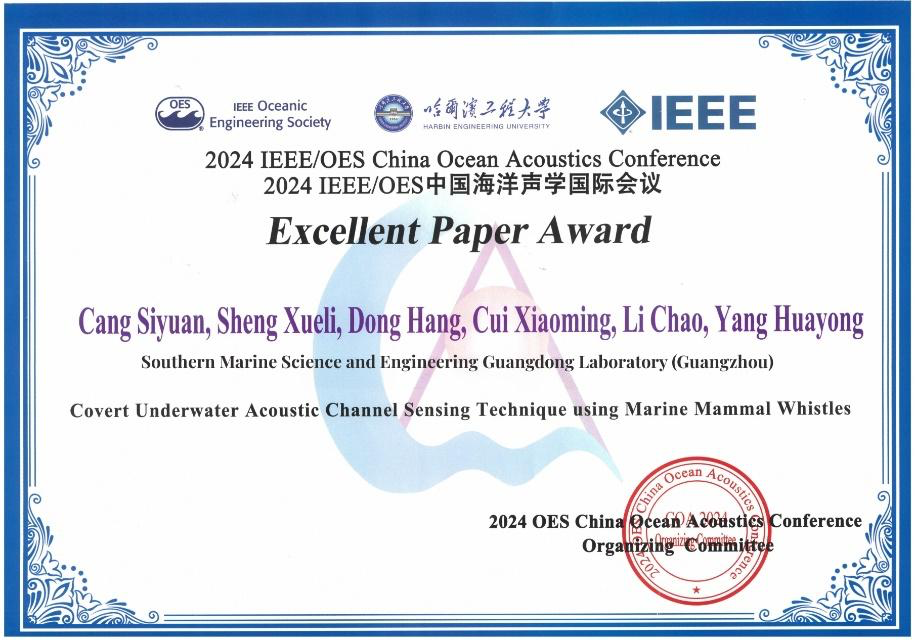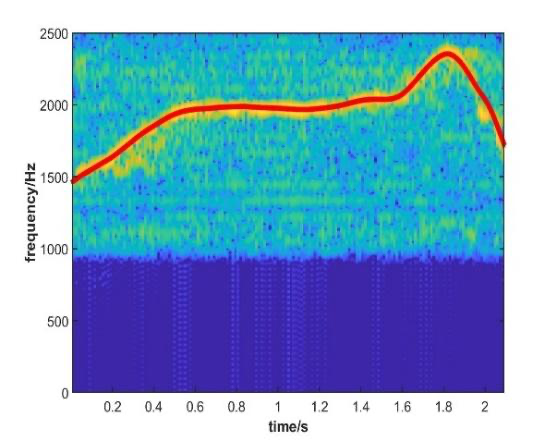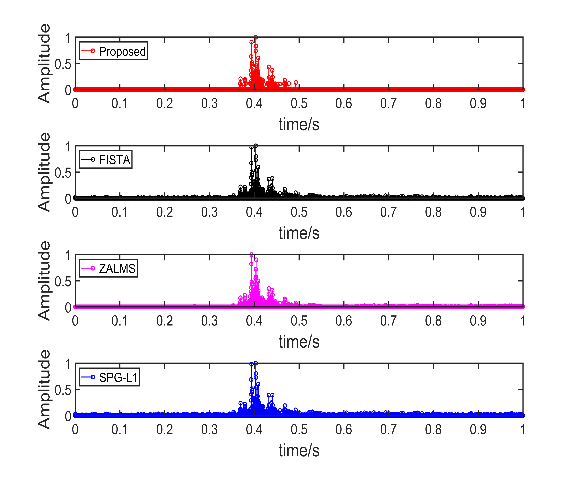Dr. Siyuan Cang, the first author of the paper "Covert Underwater Acoustic Channel Sensing Technique using Marine Mammal Whistles" recently won the "Excellent Paper Award" at the 2024 IEEE/OES China Ocean Acoustics Conference. Professor Huayong Yang served as the corresponding author. Harbin Engineering University hosted the academic conference, where more than 400 academicians, experts, and scholars from 10 countries delved into discussions and exchanges on scientific research progress and the latest research results related to Marine acoustics. This conference accepted a total of 246 papers, with 10 papers, including this paper, winning the Excellent paper award.

A bio-inspired signal similar to the marine mammal call is generated in this paper using a sparse optimization-based signal reconstruction model. At the same time, it is suggested to utilize it as the sensing signal of the marine acoustic channel. By this way, the recipient may be led to believe that what they are receiving is the acoustic signal of the dolphin community instead of an active sonar device, serving as a form of camouflage. Utilizing the fact that marine mammal signals are invisible in underwater environment helps to minimize the likelihood of being detected.
To tackle time-varying heteroscedastic noise in real marine environments, this paper presents an underwater acoustic channel sensing model that utilizes an M-estimates based robust penalty function. The model is designed to precisely collect acoustic propagation characteristics and underwater acoustic channel impulse response information in the target sea area. The 2022 South China Sea experimental data is used to verify the feasibility of the proposed algorithm above.
This research is extensively utilized in acquiring underwater information, transmitting underwater information, sensing underwater acoustic environments, and other applications.

A bio-inspired signal similar to the marine mammal call

Sea test data: underwater acoustic channel sensing results
This work was supported by the National Natural Science Foundation of China (Grant No.62301244), the Stable Supporting Fund of National Key Laboratory of Underwater Acoustic Technology (Grant No. JCKYS2023604SSJS015), Guangzhou Basic and Applied Basic Research Foundation (Grant No. 2023A04J1043), the National Key R’&’D Program of China (2021YFF0501200), the Special project for marine economy development of Guangdong Province(GDNRC[2022]31).
Attachment download:
